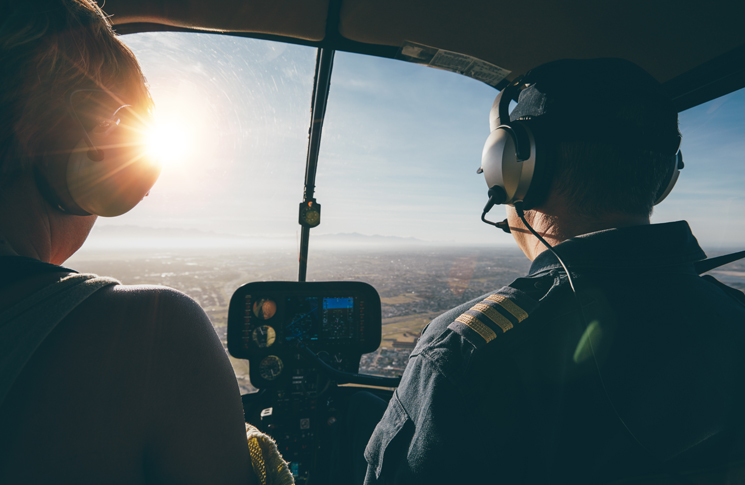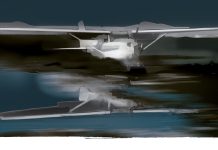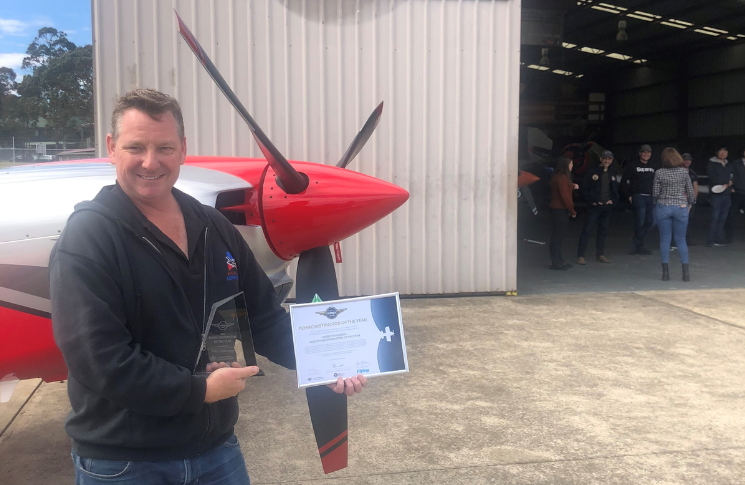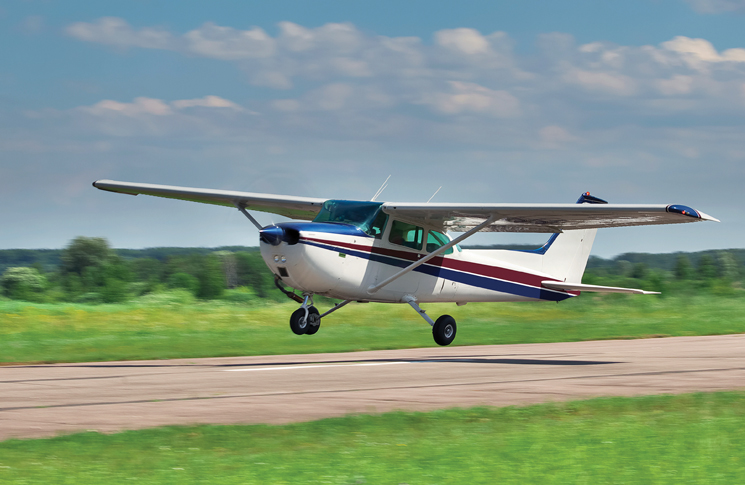Can you be brutally honest about your flying skills? If so, here’s a way to help you improve.
Most Flight Safety Australia readers probably know I’m American (although I’ve visited your wonderful country 7 times and have gone on multiple flying safaris ranging from Queensland to Uluru, to New South Wales and Canberra, Victoria, Tasmania and South Australia).
Some readers may know I served as an officer in the US Air Force. A few may know I had the unusual duty as commander of an intercontinental ballistic missile crew. Why might this be relevant? Many things I know about flying I first learnt 60 feet below ground level in a launch control centre and in the missile procedures trainer simulator back on base. One of those lessons was the value of a good post-mission debriefing.
Back then we used a system of minor, major and critical errors to score our performance. Notably, everything was objective – we were scored based on defined criteria. Certain functions, if performed incorrectly, were considered minor errors. These were items that were missed or performed incorrectly, but which did not directly impact the primary mission. Commit a minor error, and you’d have one‑tenth of a point lobbed off your beginning, perfect score.
A major error might cause (by action or inaction) one component of the hardware to become inoperative. In some cases, it was possible to ‘recover’ from a minor or even some major errors – if you caught the error in time and could reverse your actions to undo what you had done. A critical error was one that prevented you from completing your mission.
No more than 4 minor errors on a check ride, and no major errors, and you were rated as highly qualified. A ‘crit’ was an automatic failure and required retraining to re-earn certification.
You might ask a flying friend to score your flying and you could grade theirs.
What’s this got to do with flying airplanes? With a less punitive, more positive spin, our old evaluation method suggests a system of objectively self-grading your performance after a flight to see if you performed to the highly qualified level. You might ask a flying friend to score your flying and you could grade theirs. Ultimately, it could become a contest, a flying game, with the objective of making every participant a better pilot.

Scoring scheme
No game can be won without a scoring system. For the flying game I suggest you use the allowable tolerances for the manoeuvres required to earn your pilot’s licence. Stay within the tolerances and you earn a particular score. Tighten the tolerances more and you earn more points. Vary beyond allowable tolerances a little and you lose some points. Vary a lot and you lose a lot.
Here’s an example: Leveling off into cruise flight. If you level off on altitude +100 feet, you have a neutral score, a zero. Level into cruise +50 feet and earn one point; +20 feet and you earn 2 points. If you over or undershoot your altitude between 100 and 150 feet, you lose one point. More than 150 feet off altitude and you lose 2 points.
Here’s another: When landing, you touchdown on your pre-identified touchdown target, for example, the runway’s second centerline stripe. If you touchdown on target with the centerline between the main wheels, you earn 2 points. If you’re on target but left or right of centerline, you earn one point. Land up to one stripe farther along the runway but centered and you get one point. Long and off-centre and you lose a point. Touchdown before reaching your touchdown spot and you lose a point, and if you’re also off centreline, you lose 2.
If you touchdown on target with the centreline between the main wheels, you earn 2 points.
And one more: Throughout your flight in an autopilot-equipped aircraft, each time you engage the autopilot and it is in the mode you want and does not veer off your expected attitude, altitude or heading, you earn a point. If the autopilot does something you don’t expect when you engage it, you lose a point; if it veers wildly in heading or pitch because you mis-programmed it, then you lose 2 points.
The possibilities are almost endless. So, let’s make the game a more manageable.
The game’s afoot
You don’t have to try to score every task or manoeuvre on every flight. Instead, pick just a few items to grade on a particular flight or series of flights. Score your performance and see if you can improve your grade over time – that’s the goal after all, to focus your efforts and become a better pilot.
For example, for a few flights (or perhaps over a defined timeframe, such as a month or your next 5 flying hours), score yourself on these tasks:
| Task | +2 points | +1 point | 0 points | -1 point | -2 points |
| Lift-off at recommended airspeed |
Precisely on speed | On speed +3 knots |
On speed + 5 knots |
5–7 knots below speed |
More than 7 knots below speed |
| Climb airspeed from circuit height to level of | Precisely on speed |
On speed +3 knots |
On speed + 5 knots |
5–7 knots below speed | More than 7 knots below speed |
| Level off on altitude | +20 feet | +50 feet | +100 feet | +100 to 150 feet | More than 150 feet off altitude |
| Vertical speed from cruise height to circuit height | Varied no more than 25 feet per minute | Varied no more than 50 feet per minute |
Varied no more than 100 feet per minute | Varied 100 to 150 feet per minute |
Varied more than 150 feet per minute |
| Final approach speed | Precisely on speed |
On speed +3 knots |
On speed + 5 knots |
5–7 knots below speed | More than 7 knots below speed |
| Touchdown | On target +10 m/-0 m |
On target +20 m/-0 m |
On target +30 m/-0 m |
30 to 50 m past target |
Touchdown prior to target or more than 50 m past target |
See how high a grade you can earn, and who in the flying club gets the high score. After you use that scheme for a while, change it up with another like this one. Feel free to change the evaluation parameters, but don’t make it too easy:
| Task | +2 points | +1 point | 0 points | -1 point | -2 points |
| Departure runway alignment | Precisely on extended centerline | On heading with almost no drift | On heading but with minor drift | Off heading and/or alignment up to 5 degrees | Off heading and/or alignment more than 5 degrees |
| En route navigation | On course line at all times | No more than one dot off course line at all times | No more than 1.5 dots off course line at all times | More than 1.5 but less than 2 dots off course line at any time | More than 2 dots off course line at any time |
| Maintain cruise altitude | +20 feet | +50 feet | +100 feet | +100 to 150 feet | More than 150 feet off altitude |
| Arrival time | Precisely on ETA | ETA +3 minutes | ETA + 5 minutes | ETA off 5–10 minutes |
ETA off more than 10 minutes |
| Touchdown
|
On target +10 m/-0 m |
On target +20 m/-0 m |
On target +30 m/-0 m |
30 to 50 m past target |
Touchdown prior to target or more than 50 m past target |
As I said, the possibilities are endless. That’s why you should evaluate just a few parameters on a given flight and focus on improving your score on those items over time. Then rotate to a different set of graded parameters. After a while, circle back to one of the earlier sets and see if you maintain your earlier high score.
To make this worthwhile, you must be brutally honest with yourself.
Positive peer pressure
Sometimes peer pressure can be a good thing. Post your personal high scores on the flying club bulletin board alongside those of your fellow pilots. See if you can correlate scores to pilot experience or if newer pilots can do as well as – or better than – higher time pilots. You could even make this a competition between flying clubs and pilots groups in other areas.
Competition often leads to improvement; the idea is not to embarrass anyone or belittle anyone’s performance, but instead to spur every pilot to improve their skills. To make this worthwhile, you must be brutally honest with yourself. For best results fly with other pilots and confirm their scores and/or evaluate them yourself and then compare notes with the pilot. The end goal is that you all use this focus and objectivity to win the flying game and become highly qualified pilots.





